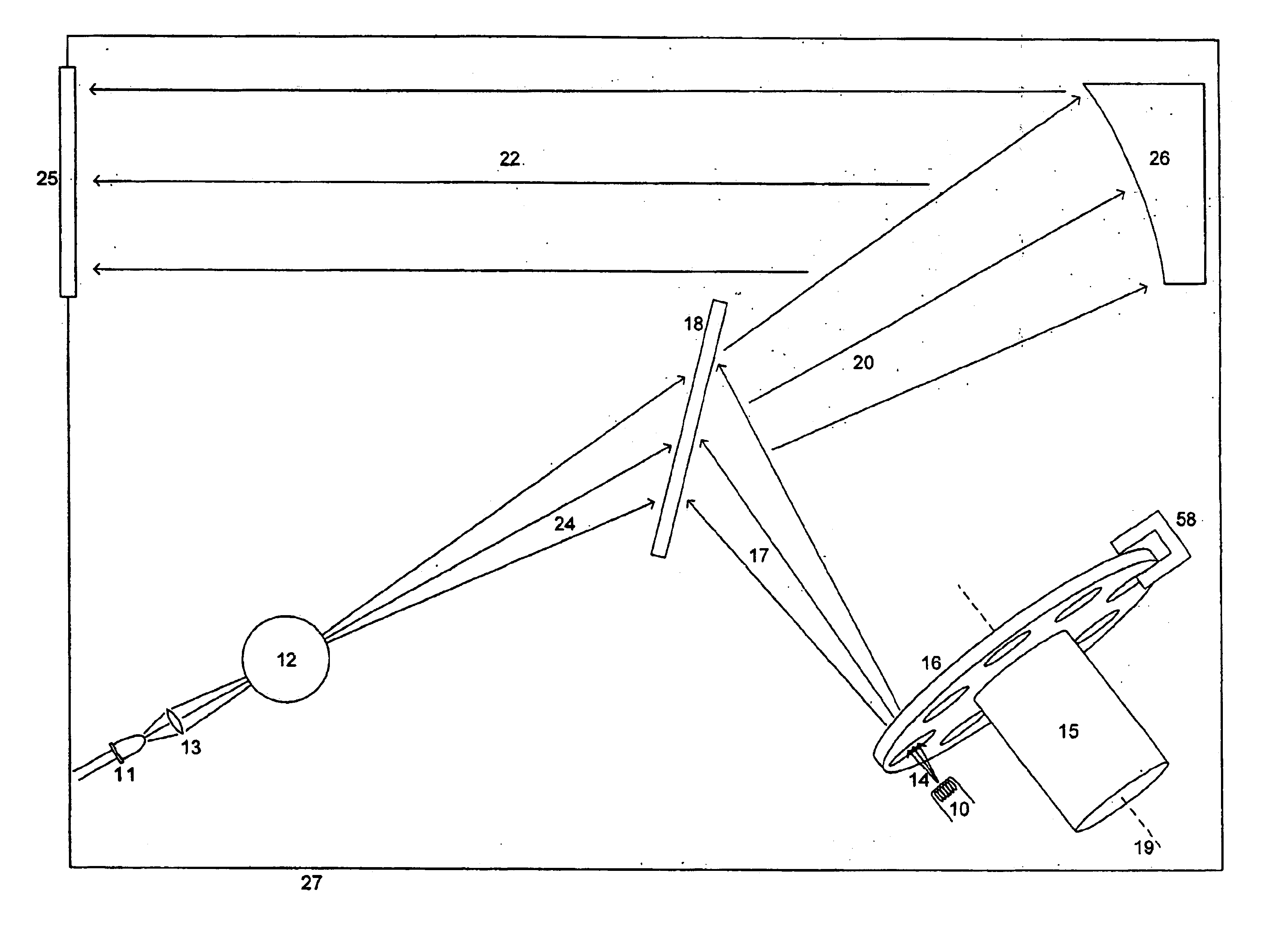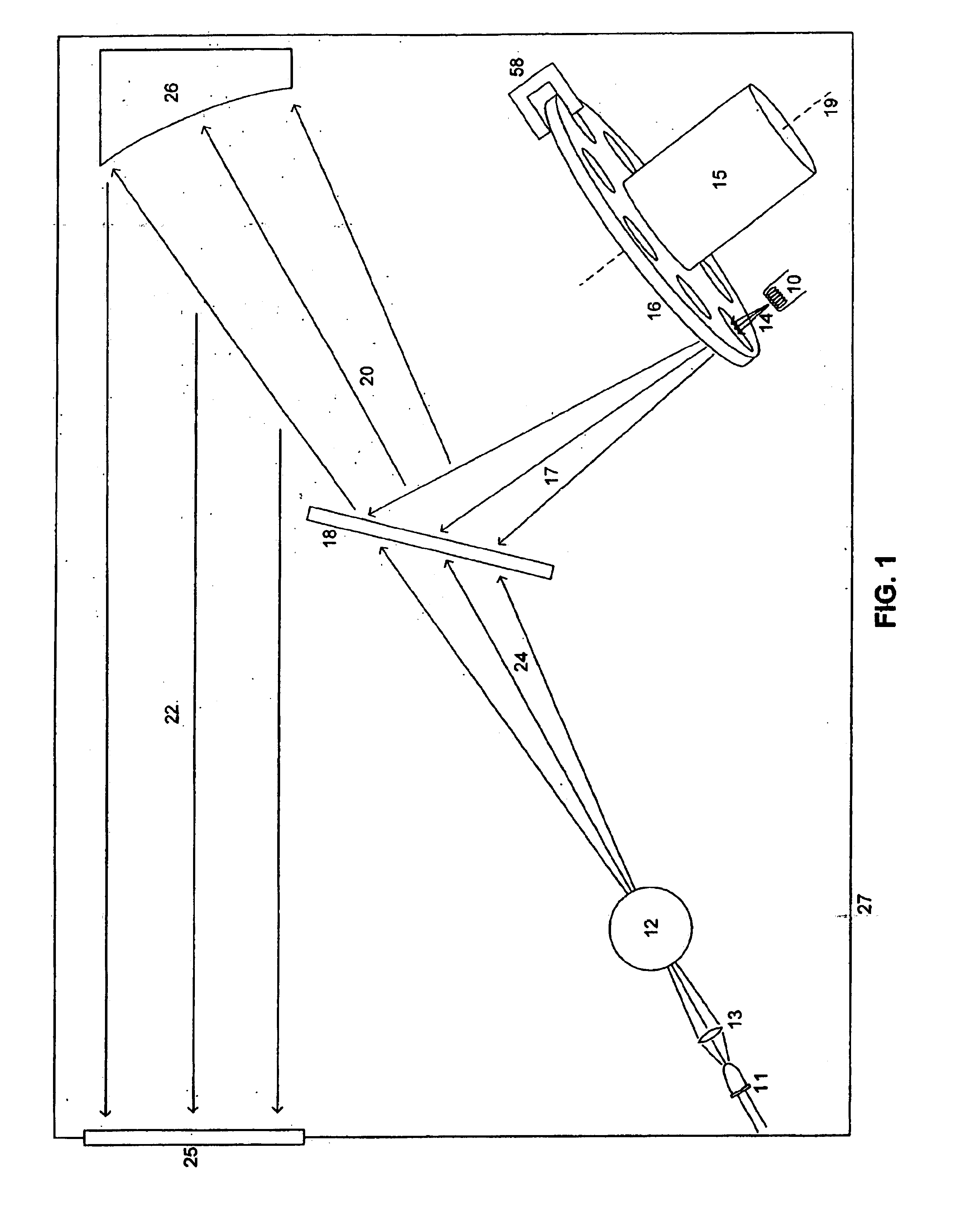Optical path structure for open path emissions sensing with particulate matter and lubricating oil consumption absorption methodology
a technology of optical path structure and open path, which is applied in the direction of optical radiation measurement, structural/machine measurement, instruments, etc., can solve the problems of inability to measure particulate matter (pm) in current open path embodiments, respiratory or heart problems, and the need for radiation sources and detectors to be placed on opposite sides
- Summary
- Abstract
- Description
- Claims
- Application Information
AI Technical Summary
Benefits of technology
Problems solved by technology
Method used
Image
Examples
Embodiment Construction
[0034]A preferred embodiment of the present invention provides an improved optical source, reflection, and detection system for gas component analysis. A preferred embodiment includes a light source unit, which preferably includes one or more of infrared, visible, and ultraviolet light sources; a reflection unit; and a light detection unit. Preferably, light sources and detectors are contained within a housing. The light is transmitted through a gas, such as air containing vehicle emissions, reflected, and detected for analysis and measurement of the amount of absorption that has occurred at known wavelengths of the light. The amount of absorption may be used to determine concentrations of gases corresponding to the specific wavelengths.
[0035]In a preferred embodiment of this invention, infrared, visible, and ultraviolet radiation is combined into one beam, directed across a path such as a road along which vehicles travel and generate exhaust, reflected back across the path, collect...
PUM
 Login to View More
Login to View More Abstract
Description
Claims
Application Information
 Login to View More
Login to View More - R&D
- Intellectual Property
- Life Sciences
- Materials
- Tech Scout
- Unparalleled Data Quality
- Higher Quality Content
- 60% Fewer Hallucinations
Browse by: Latest US Patents, China's latest patents, Technical Efficacy Thesaurus, Application Domain, Technology Topic, Popular Technical Reports.
© 2025 PatSnap. All rights reserved.Legal|Privacy policy|Modern Slavery Act Transparency Statement|Sitemap|About US| Contact US: help@patsnap.com



